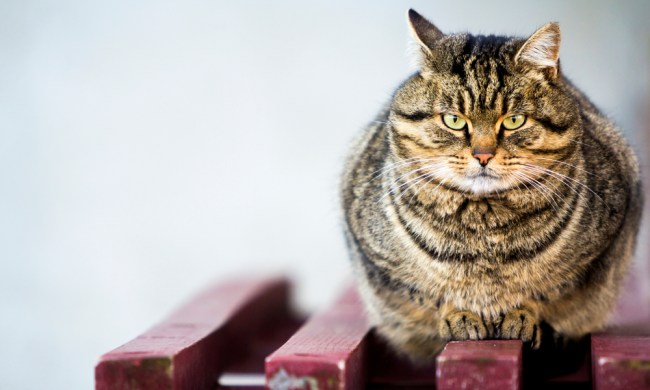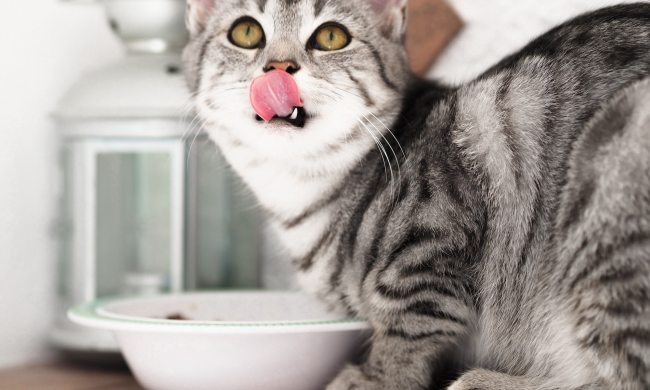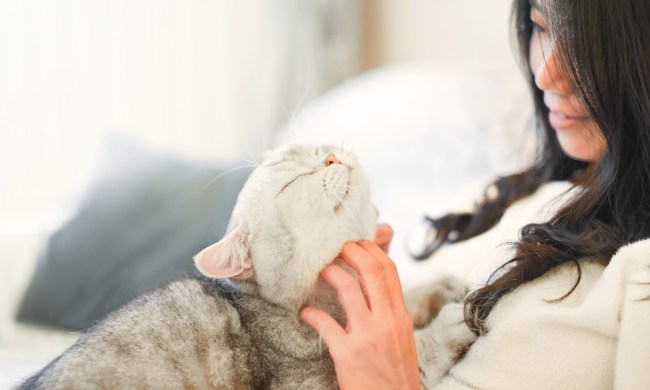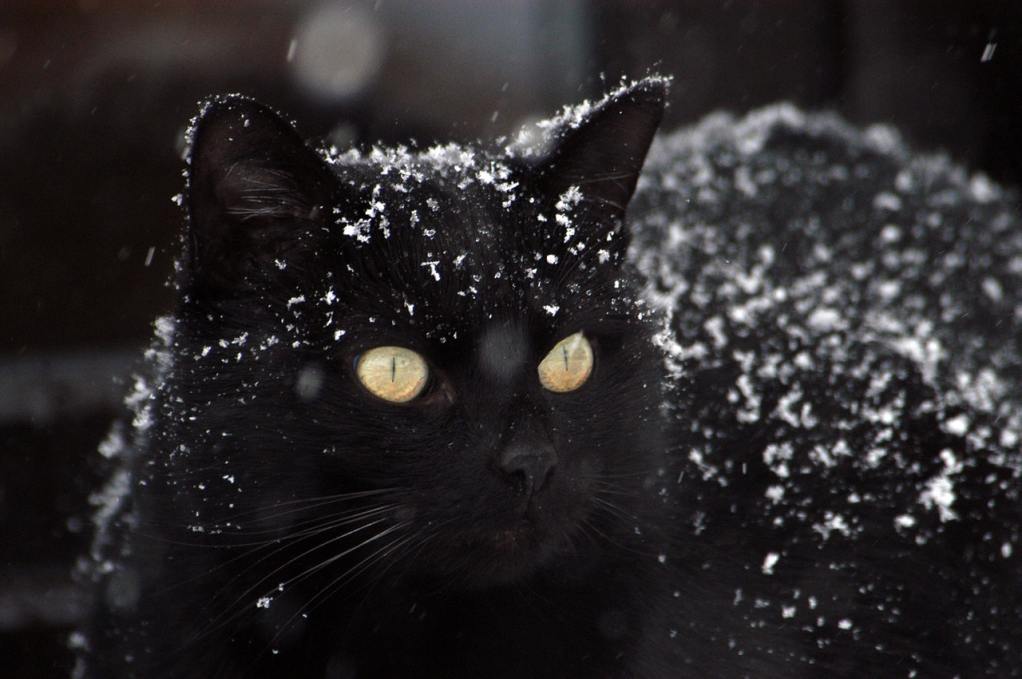
There are many reasons why your feline fur baby should remain exclusively indoors, but it’s all the more important to keep your cat inside during the winter months. A blanket of snow may look stunning, but it makes it difficult for outdoor kitties to find their way home. The potential for accidents also increases due to decreased visibility and the presence of black ice.
Even if your cat stays indoors all the time, you’ll still need to take extra steps to keep her warm during the cool weather. Some homes are naturally drafty, and with snow and ice accumulating on utility lines, the chance of power outages increases as well. Wondering how to keep cats warm in cold weather? Here are nine useful tips to get you started.
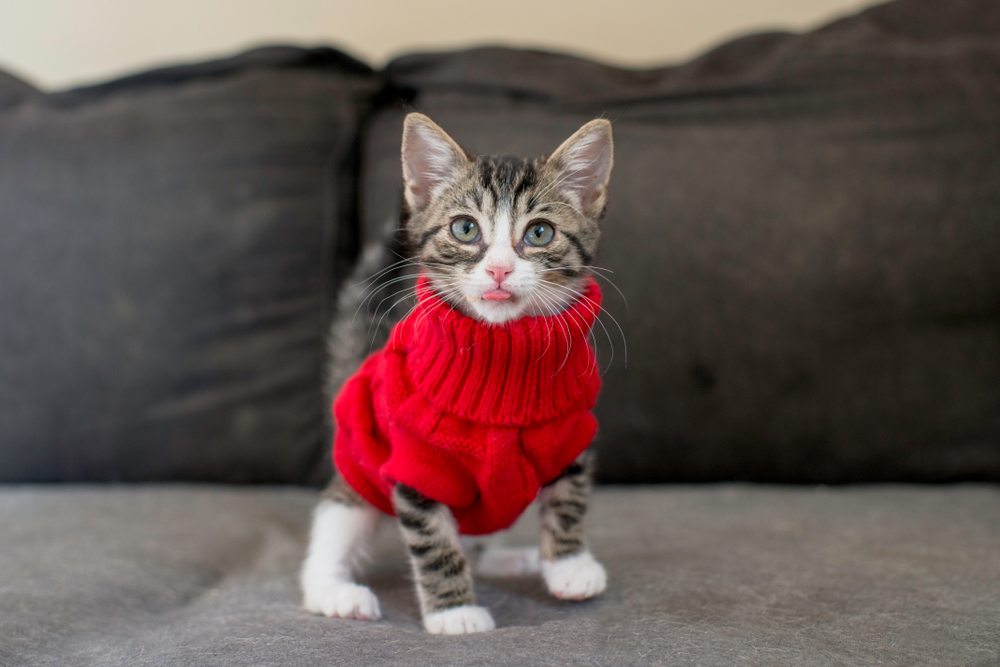
Cats in cold weather
According to Dr. Michael Arpino, a veterinarian at Veterinary Wellness Center of Boerum Hill (New York), “Most cats handle cold temperatures very well … As a general rule of thumb, anything below 45 degrees Fahrenheit is too cold.” Allowing your cat to spend time outdoors in temperatures below 45 degrees Fahrenheit puts her at risk of developing hypothermia and frostbite. And if you have a hairless cat, the risk is substantially greater. Thanks to their warm, thick coats, most cats can stay relatively warm year-round if they’re kept indoors. But if you live in an older home that’s prone to growing chilly, there are steps you can take to ensure your fur baby stays warm.
1. Play dress-up with your cat
Not all cats enjoy wearing clothes, but your fur baby may sing a different tune if she gets chilly. Opt for soft, warm clothes like fleece sweaters to keep her comfortable. Try playing with her or giving her a treat while holding the sweater, so she has positive associations with clothing instead of immediately trying to stuff her into her new winter wardrobe. If you have a hairless cat, take precautions to ensure the sweater isn’t itchy, as that can irritate her delicate skin.
2. Create a blanket fort
Does your cat love jumping into a basket of freshly dried laundry? Try warming a few blankets in the dryer and creating a cozy nook for her. The blankets won’t stay warm for long, but she’ll be able to burrow down in her blanket fort for warmth. For extra heat, place the blankets near a sunny window, where she can use the sun’s rays for an added boost of comfort.
3. Invest in a self-heating cat bed
While it’s tempting to share your heating pad with your fur baby, the heating element can quickly become too hot for small cats. A safer option is an insulated bed that heats up without electricity. This one uses ThermaNAP technology and a blend of insulating polyester and Mylar that’s self-heating. It’s also fully machine washable, so you don’t have to worry about removing any fiddly heating elements or disconnecting cords.
4. Get your cat an electric bed
Heating pads designed for our use get too hot for cats, but a plug-in electric bed that uses low wattage will keep her safe and warm during the winter months. This model has a removable, machine-washable cushion, allowing you to keep her bed free of furry buildup.
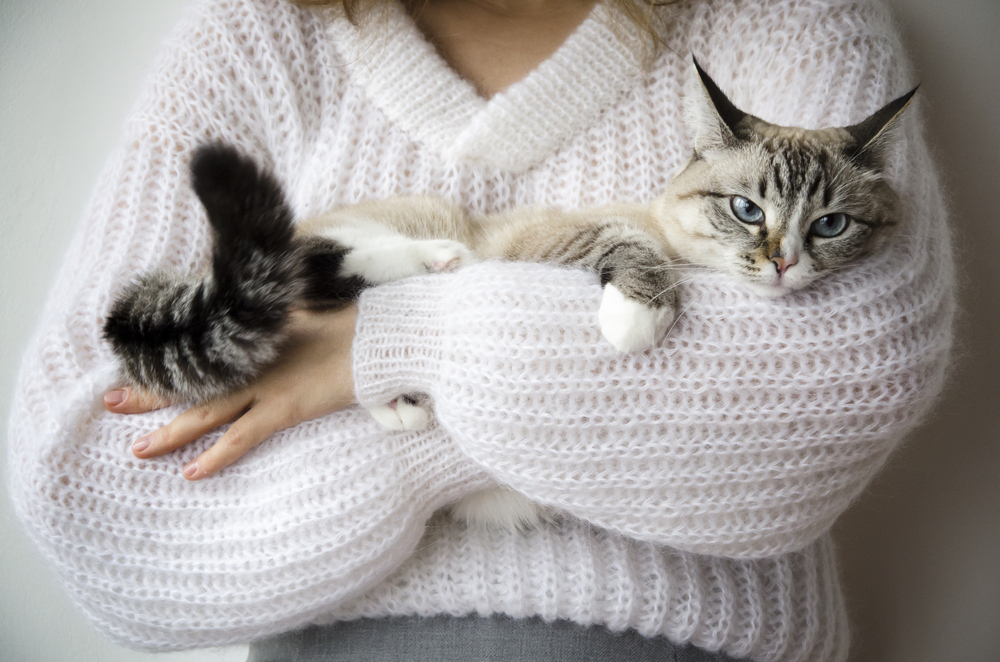
5. Spend more time cuddling
The easiest, most enjoyable way to keep your cat warm during winter is also completely free. Your cat will seek out your warmth when she’s chilly, so now is a good time to hunker down on the sofa, binge your favorite series, and snuggle in with your fur baby.
6. Resist the urge to move her litter box
It’s undeniable: Litter boxes smell atrocious. Add heat, and your house can become incredibly stinky in record time. No matter how tempted you might be to move her litter box to the basement — or the garage — those locations tend to cool off faster than any other area of your home. Keep the litter box clean, use a deodorizer, and allow your cat to potty in a warm area of the house.
7. Keep your fur baby active
Just like us, cats feel warmer when they exercise. Provide her with lots of toys that will keep her busy and active, revving up her metabolism. Active cats are also healthier than sedentary cats, so you’ll be doing her a favor in the long run.
8. Get a pet-friendly space heater
Not all space heaters are hazardous to your cat. Look for models with concealed heating elements that stay cool to the touch. Choose electric heaters over natural gas, as the risk of carbon monoxide poisoning isn’t worth it for you or your fur baby.
9. Give her more food
Lastly, feed your cat a little more. Cats in cold weather need a bit more food, as staying warm requires more calories than keeping cool. Try adding in nutritious, high-calorie treats or give her a can of wet food to supplement her increased need for calories.
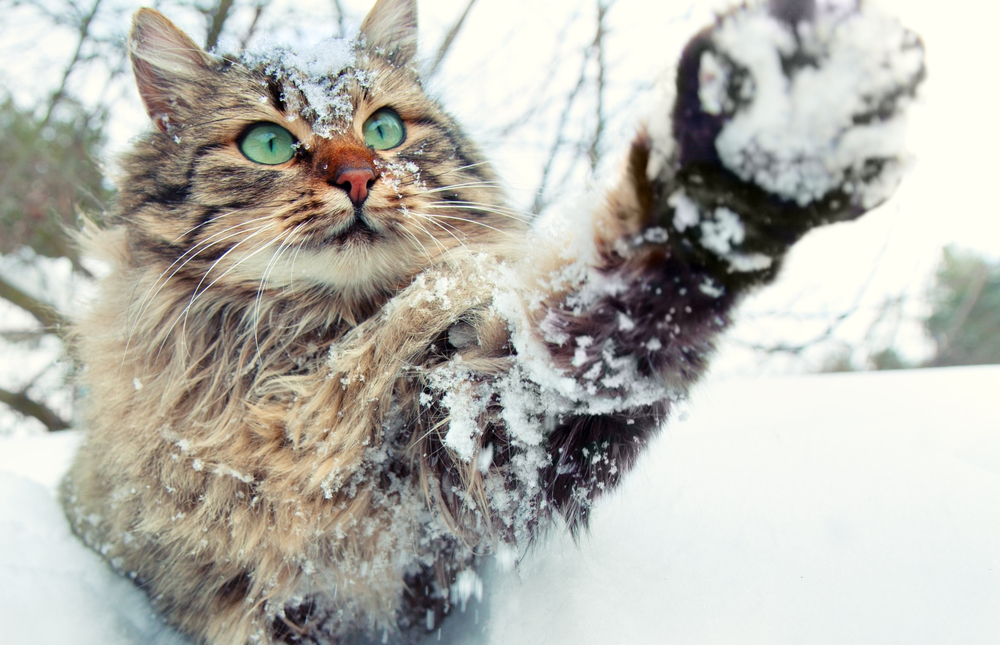
How can I keep my outside cat warm in freezing weather?
Cool, drafty houses can make the most wonderful time of the year feel as if you live in the Arctic Circle. And it’s even more miserable for little cats. If you follow our advice, your feline friend will stay nice and warm all winter long. (Don’t forget to invest in a humidifier; using heaters can lead to dry, itchy skin for you and your cat.)

